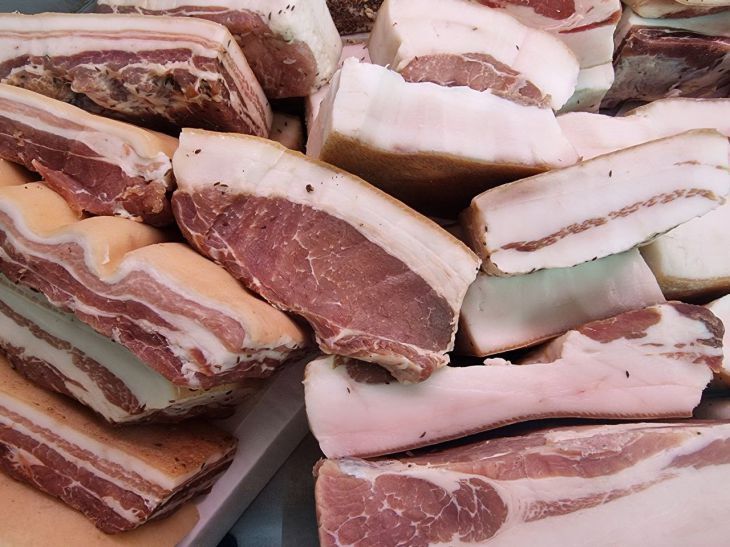How to Choose Good Pork Lard: Tips and Advice for Gourmets
Many people love pork fat for its rich flavor and culinary versatility.
However, not everyone knows how to choose truly high-quality lard that will bring pleasure and benefit.
Low-quality lard can be tough, tasteless and even harmful to health.
To avoid disappointment and make the right choice, there are several important factors to consider.
Appearance and color of lard
First of all, you should pay attention to the appearance of the lard. Good lard should have a white or slightly pinkish tint.

Yellowish or greyish colour indicates that the product is not fresh or has been stored incorrectly.
The lard should be uniform in structure, without dark spots and streaks. These signs indicate the high quality and freshness of the product.
Thickness and density of fat
The thickness of the fat is an important indicator of its quality. The optimal thickness is from 3 to 6 centimeters.
Lard that is too thin can be tough, while lard that is too thick can contain excess fat.
When choosing lard, you should pay attention to its density.
Quality lard should be firm and elastic to the touch, not too soft and not too hard. This guarantees its good quality and pleasant taste.
Presence of meat layers
Meat layers in lard can significantly improve its taste and nutritional properties.
However, it should be remembered that they should be evenly distributed and not too thick.
Too thick layers of meat can make the lard tougher and more difficult to cook.
Uniform and thin layers of meat, on the contrary, give the lard juiciness and additional flavor, making it ideal for consumption raw or marinated.
The smell of lard
Smell is one of the most important indicators of the quality of pork fat. Good fat should have a fresh, pleasant aroma.
An unpleasant odor or a strong smell of pork fat indicates that the lard is old or has been stored incorrectly.
When choosing lard at the market or in the store, do not hesitate to ask the seller to let you smell the product. This will help you avoid buying a low-quality product.
Checking for salts and spices
Some manufacturers add salt and spices to lard to improve its taste and increase its shelf life.
However, too much salt can make the product too salty and unhealthy.
When buying lard, you should pay attention to its taste and aroma to make sure that it does not contain excessive amounts of salt or spices.
It is better to choose natural lard without additives and add spices yourself to your taste.
Proper storage of lard
Storage of lard plays a key role in preserving its taste and nutritional properties.
Lard should be stored in a cool place, protected from direct sunlight. The ideal option is a refrigerator or a cold cellar.
Before storing, the lard can be wrapped in parchment paper or placed in a vacuum container to prevent contact with air and extend its shelf life.
Proper storage allows you to preserve the freshness and quality of lard for a long time.
Earlier, nutritionists told who should definitely eat buckwheat .
